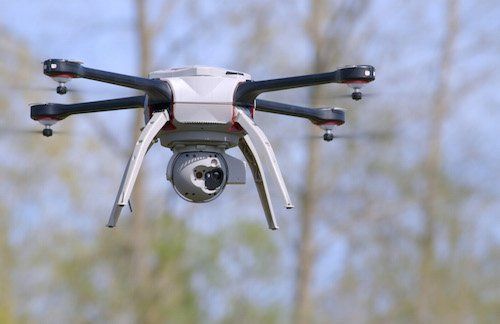
Commercial operators of small unmanned aerial systems (sUAS) weighing less than 55 pounds will have to pass an FAA knowledge test every two years and their aircraft will have to be registered under regulations proposed in a Notice of Proposed Rulemaking released by the FAA and the DOT Sunday (PDF). In a telephone news briefing, FAA Administrator Michael Huerta told reporters the long-awaited proposed rule attempts to strike a balance between public safety and the public benefit that drone use is expected to offer. “It has to be flexible and adaptable and it has to work for users and proponents as well as for those who are interested in the highest levels of safety,” Huerta said. Under the new rules, small drones could be flown anywhere in Class G airspace in day VFR (three-mile visibility) but must remain within line of sight of the operator, not fly above 500 feet AGL and not fly faster than 100 mph. The drones would not be allowed to fly over any people not directly involved with the operation of the drone. Flight would be prohibited in Class A airspace (above 18,000 feet) and only permitted with prior ATC approval in B, C, D and E. There is also a proposal for a “micro” class that could be operated over other people and the operators would not have to be FAA certified.
Huerta said the operator certification process needs to satisfy the agency that those flying drones have “a base level of understanding” of the rules of the air but it also needs to be easily accessible. The initial testing and biennial recurrency exams will be done at “FAA-approved knowledge testing centers” and although he didn’t say exactly what those might look like it would seem logical that already-established flight schools could fill that bill. Operators will also have to be “vetted by the Transportation Security Administration” and the certificate won’t be issued “until the TSA determines that the applicant will not pose a security threat.” Drone operators will not have to undergo an FAA medical but must self-certify before every flight.
There will be no airworthiness requirements for the aircraft but they will be registered with N-numbers just like other aircraft. The registration has to be displayed on the aircraft either in accordance with FAA standards or in lettering as large as is practical for the size of the vehicle. Before every flight, the operator will have to do a pre-flight inspection to ensure airworthiness. Accidents will have to be reported.
Huerta would not be pinned down on when a final rule might be issued. There is a 60-day comment period and the rule is 195 pages long. What’s more, it also invites comments on operations like beyond visual line of sight and for larger aircraft that are beyond the scope of this rule. He said the FAA expects a lot of comments on the rule and that each one has to be considered and addressed before the rule can become final. He said only that the agency was committed to processing the comments as fast as possible and would not speculate on how long it might take.
Reaction has been generally positive to the proposal. Brian Wynne, the CEO of the Association for Unmanned Vehicle Systems International (AUVSI), called the rule “a good first step” but said it will take time to digest all its contents. “This proposed rule is a critical milestone in the UAS integration process, and one that is long overdue,” he said. “UAS technology has largely remained grounded while many prospective users wait for the regulatory framework to catch up.” AOPA, meanwhile, said most of its concerns have been addressed by the document but is also concerned about how long it might take. “Clear guidance for UAS operations is needed to protect pilots and passengers,” AOPA President Mark Baker said. “We’re pleased that the FAA is moving the rulemaking process forward, but this really can’t happen fast enough.”


































